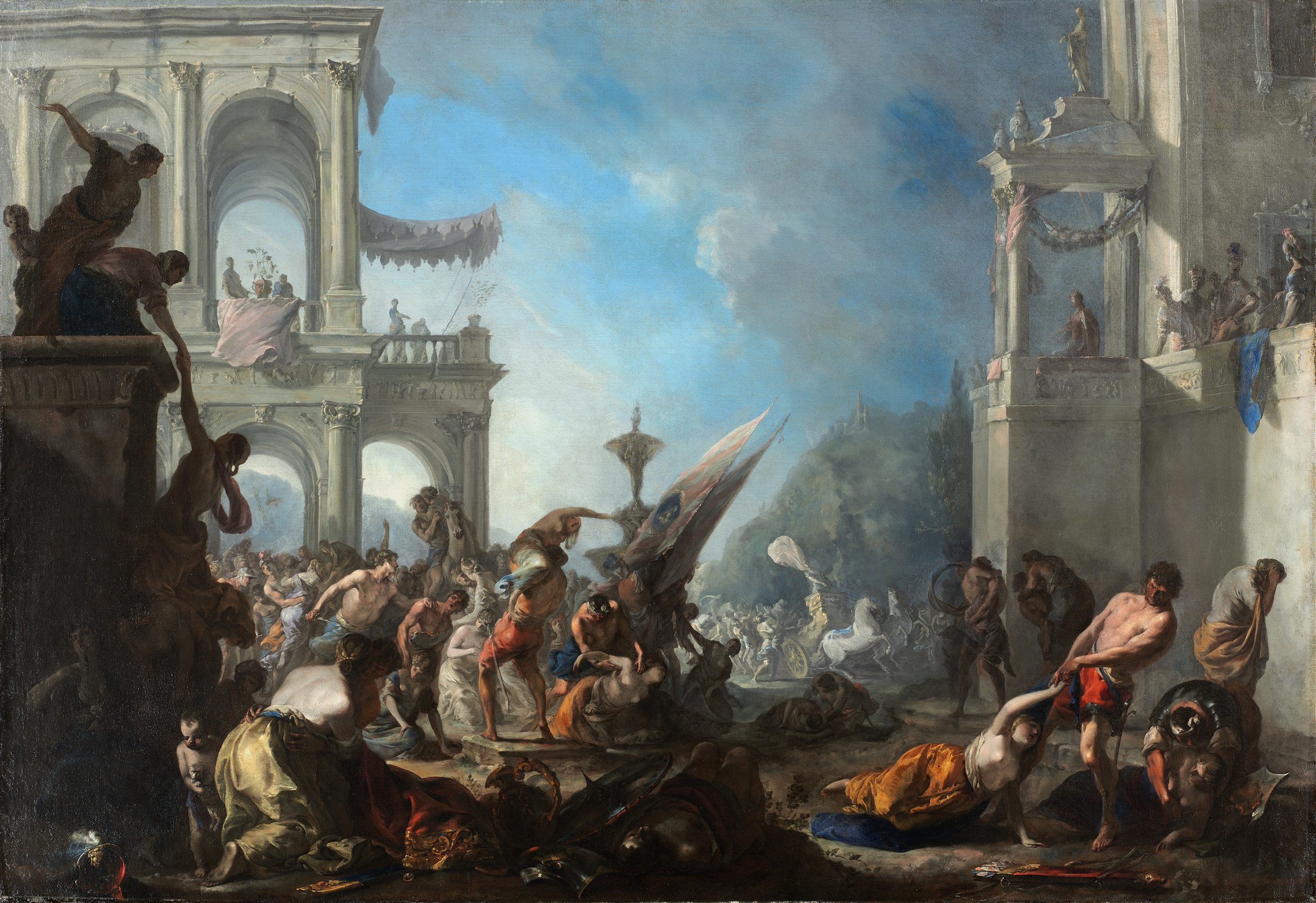Description
Abduction of The Sabine Women by Johann Heinrich Schönfeld printed on a Hoodie
About the Hoodie
Modern fit
It provides a more tailored look than a regular fit
Comfortable
The fabric and fit of this item are extra comfy
Tear-away tag
Easily removable tear-away tag that allows you to add a custom inside label
Premium quality
The product is made from premium, high-quality materials
Classic unisex hoodie with a front pouch pocket and matching flat drawstrings. The 100% cotton exterior makes this hoodie soft to the touch.
- 65% ring-spun cotton, 35% polyester
- Charcoal Heather is 60% ring-spun cotton, 40% polyester
- Carbon Grey is 55% ring-spun cotton, 45% polyester
- 100% cotton face
- Fabric weight: 8.5 oz./yd.² (288.2 g/m²)
- Front pouch pocket
- Self-fabric patch on the back
- Matching flat drawstrings
- 3-panel hood
- Tear-away tag
Johann Heinrich Schönfeld (1609-1684)
Johann Heinrich Schönfeld was a German painter in the Baroque style.
He was the son of Johann Baptist Schönfeld (?-1635); a goldsmith. From birth, he was blind in his left eye and could only use his right hand for simple tasks, so he was not trained as a goldsmith, as would have otherwise been the case. Instead, he received lessons in painting from Caspar Sichelbein [de] in Memmingen. Later, he took study trips to Stuttgart and Basel.
In 1633, at the height of the Thirty Years’ War, he fled to Italy. Originally, he lived in Rome, then moved to Naples around 1649. After a brief stay in Dresden he returned home in 1651. The following year, in Pfuhl (near Ulm) he married Anna Elisabetha Strauß. They had eight children together. Shortly after their marriage, they moved to Augsburg, where he became a citizen and a member of the Master’s Guild.
In the following years, he created many church paintings; notably at Würzburg Cathedral, where he painted Christ carrying the Cross and a likeness of Saint Leonard of Noblac. Both paintings burned during the bombing of Würzburg in World War II.. In addition to religious works, he painted mythological and genre scenes.
One of his best-known students was Johann Schmidtner.






Reviews
There are no reviews yet.